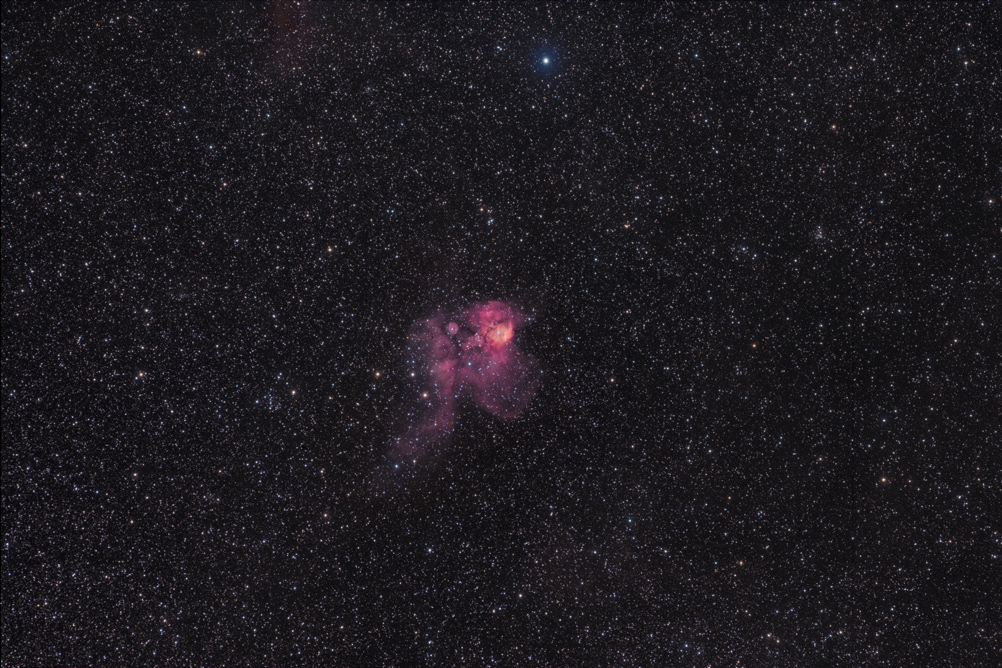
NGC2467: This is a wide-field view of this region, also known as the “Skull and Crossbones Nebula” (although I think it looks more like a bird).
This is a very active star-forming region, visually located in the southern constellation Puppis.
The region is used by scientists to learn about star formation; this photo displays a variety of features that illustrate multiple phases of star birth.
The bright star at the center of the large yellowish region in the nebula is HD64315, a massive young star that is helping to shape the structure of the whole nebular region.
Toward the center, deep dark lanes of dust hide parts of the nebula that probably are forming new stars. HD 64568 is a hot, extremely massive main sequence blue-white star.
The bright blue star that appears to be in the central part of the nebula/star cluster complex, HD64455, is a foreground star (much closer to us than the nebula) not physically associated with this nebula or the stars it is creating.
This view contains the open star clusters Haffner 18 and Haffner 19 (see annotated versions of this photo, by clicking on the color version), as well as vast areas of ionized gas
(causing the reddish color). Haffner 18 illustrates three different stages of this process of star formation: In the centre of the cluster, a group of mature stars that
have already dispersed their birth nebulae represents the completed product of the star-formation process. A very young star, FM3060a, just come into existence and still surrounded by its birth cocoon of gas,
provides insight into the earliest moments of star birth; the shell is about 2.5 light-years wide and expands at a speed of 20 km/s. It is thought to have been created only about 40,000 years ago.
Finally, the dark dust clouds are active stellar nurseries that will produce more new stars in the future. Haffner 18 contains about 50 stars.
This region is extremely young by cosmic standards, no more than a few million years old.
It has been estimated that H18, H19, and the large nebula are about 19,200 light years, 20,900 light years, and 20,500 light years away from us.
Copyright 2014, 2015 Mark de Regt